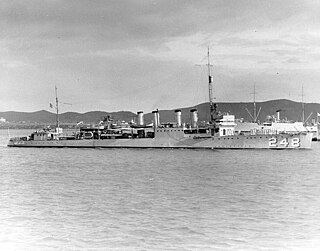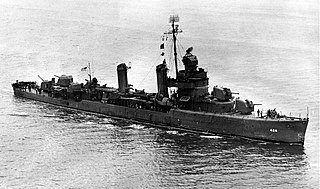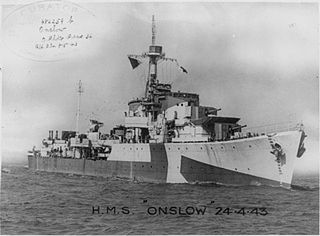The escort carrier or escort aircraft carrier, also called a "jeep carrier" or "baby flattop" in the United States Navy (USN) or "Woolworth Carrier" by the Royal Navy, was a small and slow type of aircraft carrier used by the Royal Navy, the United States Navy, the Imperial Japanese Navy and Imperial Japanese Army Air Force in World War II. They were typically half the length and a third the displacement of larger fleet carriers, slower, more-lightly armed and armored, and carried fewer planes. Escort carriers were most often built upon a commercial ship hull, so they were cheaper and could be built quickly. This was their principal advantage as they could be completed in greater numbers as a stop-gap when fleet carriers were scarce. However, the lack of protection made escort carriers particularly vulnerable, and several were sunk with great loss of life. The light carrier was a similar concept to the escort carrier in most respects, but was fast enough to operate alongside fleet carriers.

USS Reuben James (DD-245) was a four-funnel Clemson-class destroyer made after World War I that was the first US Navy ship to be named for Boatswain's Mate Reuben James, who had distinguished himself fighting in the First Barbary War, and was the first to be sunk by hostile action in the European Theater of World War II. Reuben James was laid down on 2 April 1919 by the New York Shipbuilding Corporation of Camden, New Jersey, launched on 4 October 1919, and commissioned on 24 September 1920. The destroyer was sunk by a torpedo attack from German submarine U-552 near Iceland on 31 October 1941, before the United States had officially joined the war.

HMS Chaser (D32/R306/A727) was an American-built Attacker-class escort carrier that served with the Royal Navy during the Second World War.

USS Fairfax (DD-93) was a Wickes-class destroyer in the United States Navy during World War I, later transferred for World War II service first to the Royal Navy as HMS Richmond (G88), a Town-class destroyer, and then to the Soviet Navy as Zhivuchy.

Barry (DD-248/APD-29) was a Clemson-class destroyer in the United States Navy during World War II. She was the second ship named for Commodore John Barry.

USS Badger (DD–126) was a United States Navy Wickes-class destroyer in commission from 1919 to 1922 and from 1930 to 1945. She saw service during World War II. She was named for Commodore Oscar C. Badger.

The first USS Twiggs (DD–127) was a Wickes-class destroyer in the United States Navy during World War I. She was named for Major Levi Twiggs. She was later transferred to the Royal Navy, as HMS Leamington and to the Soviet Navy as Zhguchy, before returning to Britain to star in the film The Gift Horse, which depicts the St. Nazaire Raid.

USS Tarbell (DD–142) was a Wickes-class destroyer in the United States Navy during World War I. She was the first ship named for Captain Joseph Tarbell.

USS Du Pont (DD–152) was a Wickes-class destroyer in the United States Navy during World War II, later reclassified as AG-80. She was the second ship named for Rear Admiral Samuel Francis Du Pont.

USS George E. Badger (DD-196/CG-16/AVP-16/AVD-3/APD-33) was a Clemson-class destroyer in the United States Navy during World War II; she was named for Secretary of the Navy George E. Badger (1795–1866).

USS Greene (DD-266/AVD-13/APD-36) was a Clemson-class destroyer in the United States Navy in service from 1919 to 1922. She was recommissioned in 1940 and wrecked in a storm in October 1945.

USS Kearny (DD-432), a Gleaves-class destroyer, was a United States Navy warship during World War II. She was noted for being torpedoed by a German U-boat in October 1941, before the U.S. had entered the war. She survived that attack, and later served in North Africa and the Mediterranean.

USS Hilary P. Jones (DD-427) was a Benson-class destroyer in the United States Navy during World War II. She was named for Admiral Hilary P. Jones.

USS Charles F. Hughes (DD-428) was a Benson-class destroyer in the United States Navy during World War II. She was named for Charles Frederick Hughes.

USS Ahrens (DE-575), a Buckley-class destroyer escort of the United States Navy, was named in honor of Private Edward H. Ahrens (1919–1942), who was killed during the Battle of Tulagi and Gavutu–Tanambogo on 8 August 1942. He was posthumously awarded a Navy Cross.

HMS Onslow was an O-class destroyer of the Royal Navy. The O-class were intermediate destroyers, designed before the outbreak of the Second World War to meet likely demands for large number of destroyers. They had a main gun armament of four 4.7 in guns, and had a design speed of 36 kn. Onslow was ordered on 2 October 1939 and was built by John Brown & Company at their Clydebank, Glasgow shipyard, launching on 31 March 1941 and completing on 8 October 1941.

USS Haverfield (DE-393) was an Edsall-class destroyer escort built for the U.S. Navy during World War II. She served in the Atlantic Ocean and the Pacific Ocean and provided destroyer escort protection against submarine and air attack for Navy vessels and convoys.

USS Janssen (DE-396) was an Edsall-class destroyer escort in service with the United States Navy from 1943 to 1946. She was sold for scrapping in 1973.

USS Wilhoite (DE-397) was an Edsall-class destroyer escort built for the United States Navy during World War II. She served in the Atlantic Ocean and the Pacific Ocean and provided destroyer escort protection against submarine and air attack for Navy vessels and convoys.

HMS Whitehall, pennant number D94, later I94, was a Modified W-class destroyer of the British Royal Navy that saw service in the Second World War.




















